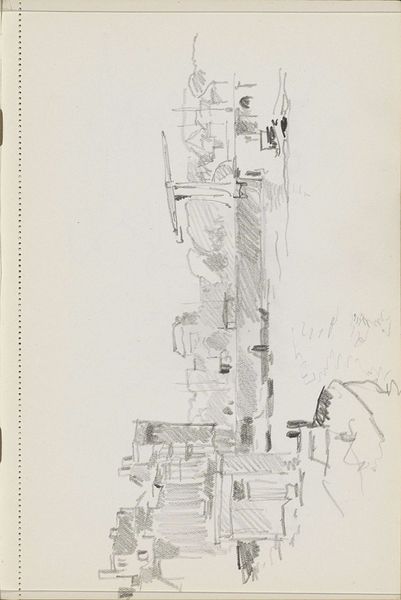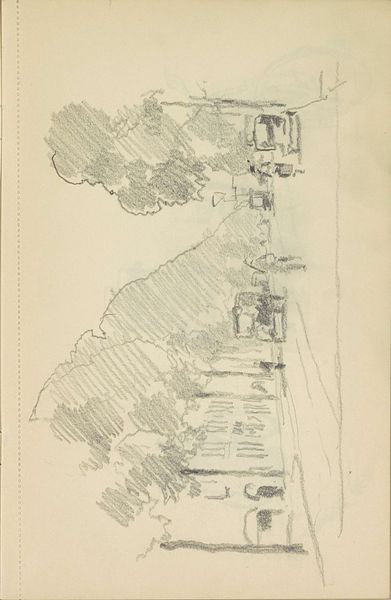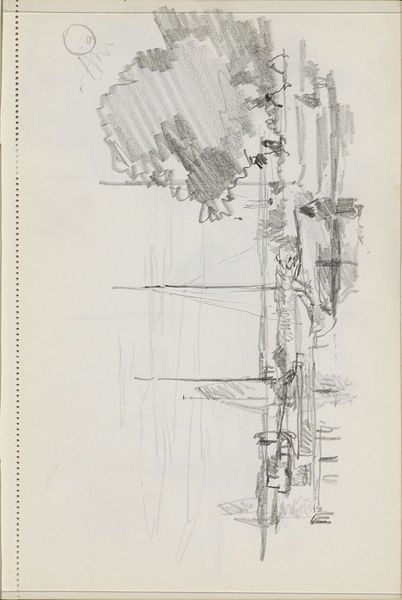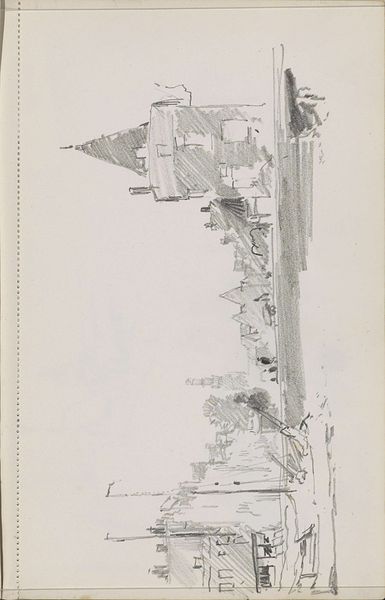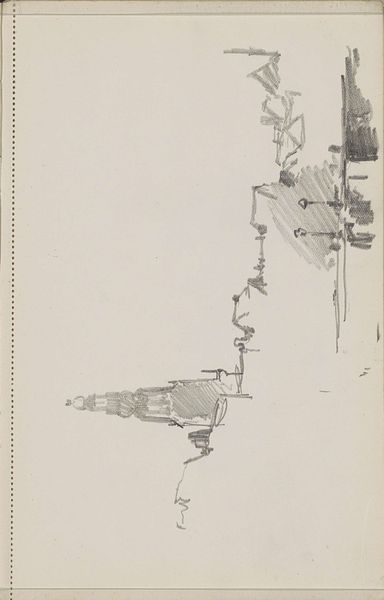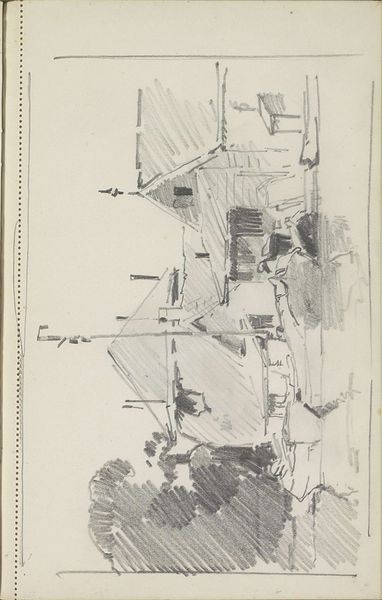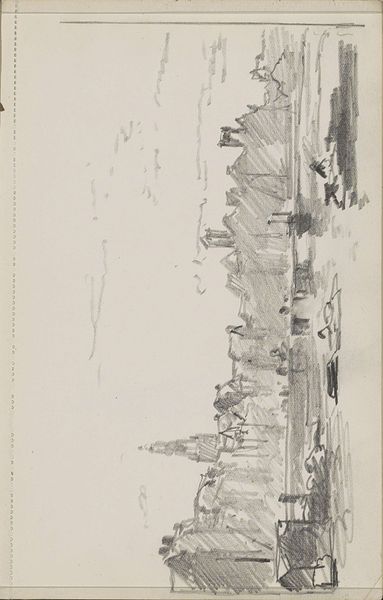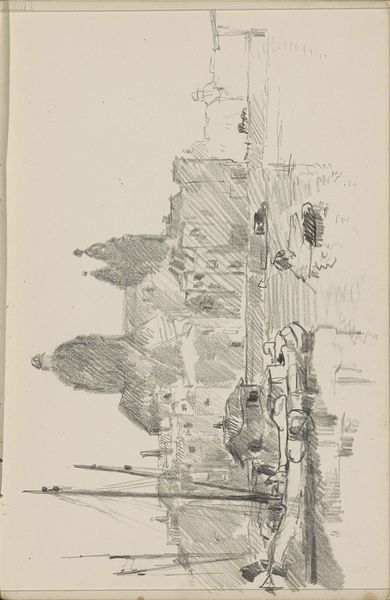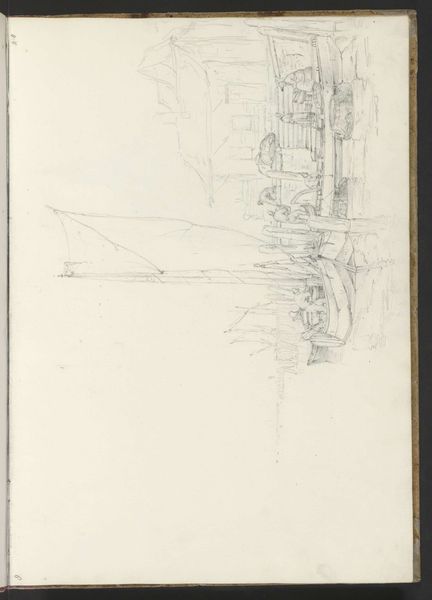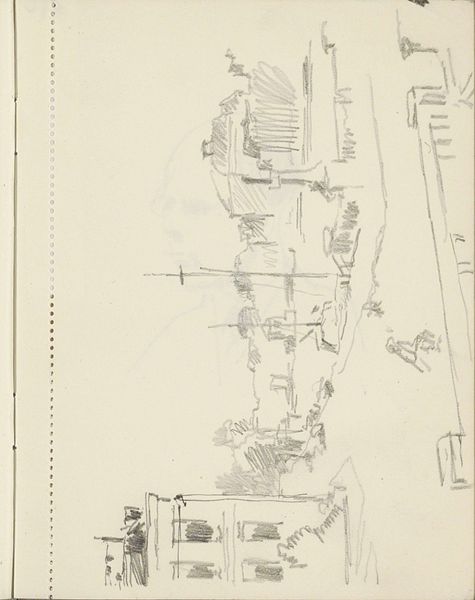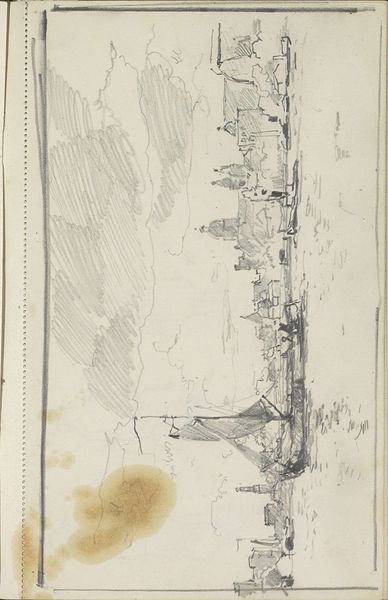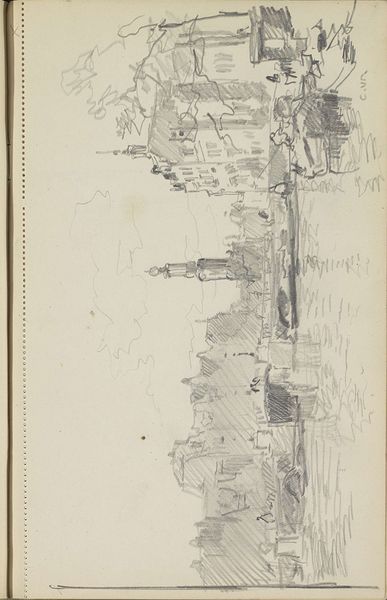
Copyright: Rijks Museum: Open Domain
Curator: We're looking at "Boats on the Water by a Lifting Bridge," a drawing by Cornelis Vreedenburgh, dating from 1890 to 1946. It's rendered in pencil and pen, a quick sketch capturing a waterside scene. Editor: My first thought? Serenity. There's something very peaceful in its simplicity. It feels like a moment captured in time, almost fleeting. I like how open the composition feels; it's light, spacious, and free from any sense of oppression. Curator: Yes, and notice how Vreedenburgh is primarily known for cityscapes and landscapes. He seems to be capturing the quiet industriousness here – a bridge slightly raised for boats to pass. Lifting bridges like this have always signified transit—transitions—for people. The implication for the viewer is often one of seeing change over time. Editor: I agree that seeing this imagery provides access to a specific, historic Dutch relationship with waterways. The bridge itself is fascinating; its mechanical purpose allows for mobility but simultaneously suggests division. Its placement creates both opportunity and restriction, and the light strokes of the drawing mirror that dual state. Curator: And if we consider that Vreedenburgh worked through two World Wars, the lifting bridge carries some weight. It is there as much to assist as it is to impede—controlling who can travel, what materials and cultures can intermingle. Looking closer at the work overall, its spontaneous sketch quality suggests the urgency of capturing something transient, the awareness of change in an instant. Editor: So, looking at the social context then, the image speaks to freedom, restricted transit, trade routes, cultural movement…all layered beneath this tranquil surface. I find this a subtle protest against societal restraints disguised in unassuming sketches. It becomes not just boats on water, but boats seeking passage, with the bridge both obstacle and facilitator. Curator: A poignant reminder that symbols, even in seemingly simple sketches, can contain multilayered messages and histories, which persist for a long time. Editor: Absolutely. The artwork compels one to remember that images hold many interpretations contingent upon time, geography, and cultural background. The most impactful images are often those we initially perceive to be artless and innocent.
Comments
No comments
Be the first to comment and join the conversation on the ultimate creative platform.
